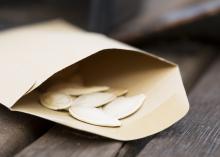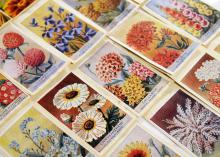Information Possibly Outdated
The information presented on this page was originally released on December 20, 2021. It may not be outdated, but please search our site for more current information. If you plan to quote or reference this information in a publication, please check with the Extension specialist or author before proceeding.
Days of browsing garden catalogs are mostly over
Besides this being the multiple holiday season with Christmas and then New Year’s back-to-back, it’s also the time when many gardeners start planning their landscapes and plantings for the coming year.
One of my favorite things to do in past years was to gather all the seed catalogs and start dreaming.
It reminds me of that long-ago anticipation of the Sears catalog arriving before Christmas. How many of you remember that? I used to spend hours and hours thumbing through every single page of that catalog of wonder. I look back now and realize this was just early training for my garden catalog reading.
Usually, the seed catalogs start hitting the mailbox toward the end of November and new arrivals reach a crescendo before the end of the year. But something is different this year. I’ve received only five catalogs in the mail; that’s right, only five. The ones I got are my favorites -- but aren’t they all? -- but I was expecting more.
The lack of seed catalogs in my mailbox is something I’ve been thinking about lately. Are the gardening catalogs in danger of going the way of the Sears catalog?
Of course, I’m going to blame COVID for the catalog drought. COVID is responsible for getting up to 20 million new gardeners outside and enjoying their landscapes.
The pandemic is also responsible for an unprecedented increase in spending at the independent garden centers. This increase in demand for garden plants has our nursery industry growers operating at full capacity and more.
All of this is a good thing for the consumer horticulture industry, but it leaves the catalogs at a disadvantage. Publications have to be printed months in advance, which means they don’t have the very latest product availability information. In an age where we expect the latest information to be immediately available, it results in fewer catalogs being printed.
So, what is a gardener to do? Of course, the answer is to go garden shopping online.
The best places for buying trees and shrubs will always be the local, independent garden centers. However, this past year, I have purchased a few new woody plants and rose selections online. They were in containers only up to one gallon, so it will require some patience before I can fully enjoy them, something I always advise but rarely have myself.
But it’s good to know that it is possible to purchase plants online.
Buying seeds online is my go-to for a couple of reasons.
First, you can immediately see availability. There’s nothing more frustrating than ordering something from a catalog and finding out it’s on back order. Second, many seed companies add new varieties as they become available. I’ve gotten a couple of limited-release peppers I’ll be writing about in 2022.
There are lots of reputable online garden seed companies, but my own experience warns me away from the biggest online retailers. Stick with companies you know and can interact with directly. You just don’t know what you’re getting or where its coming from when you use anonymous sellers.
Almost all consumer horticulture products have been the victim of supply chain shortages for the last two years. So, make some decisions soon and order now what you’d like to grow in 2022.
Happy Gardening!




